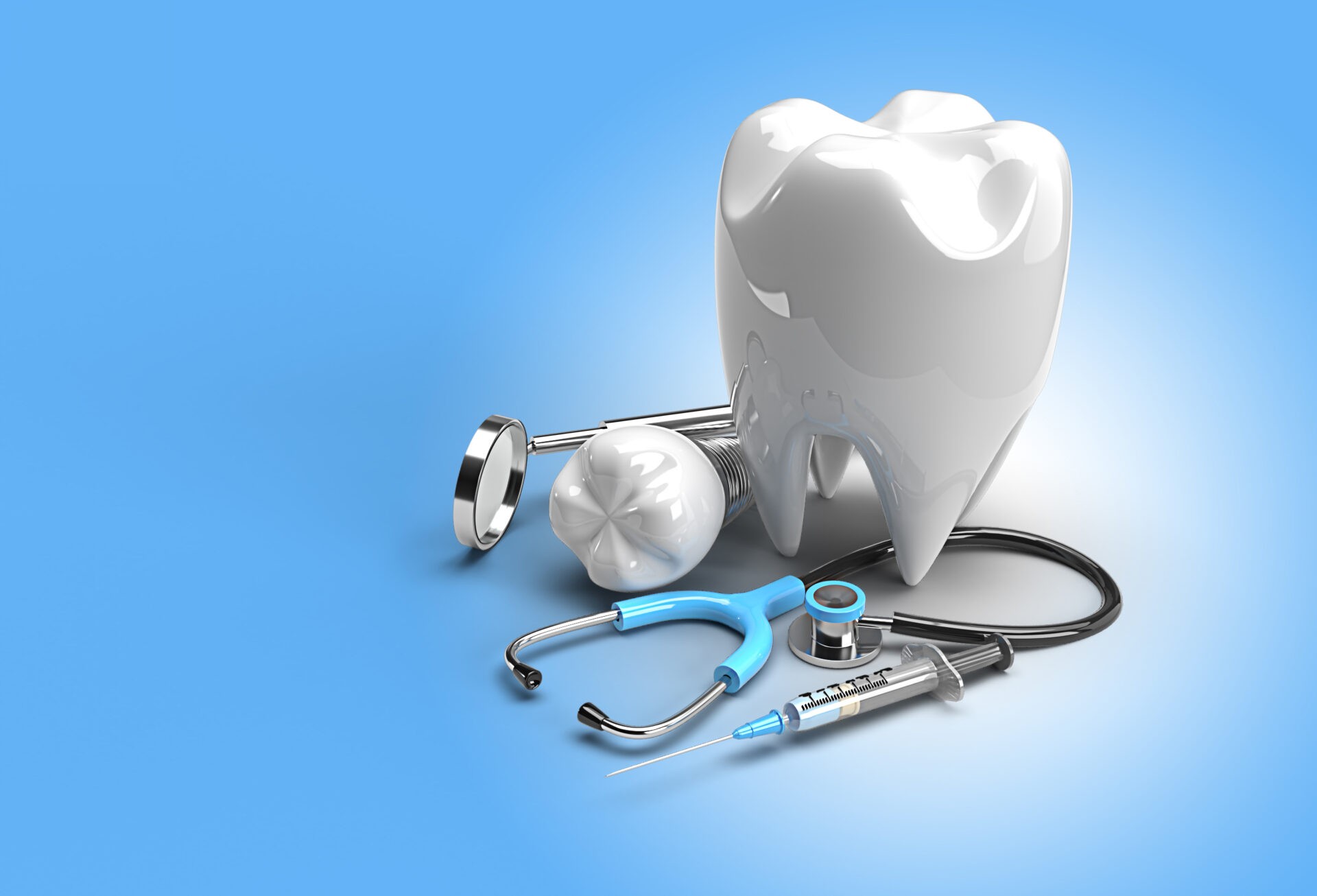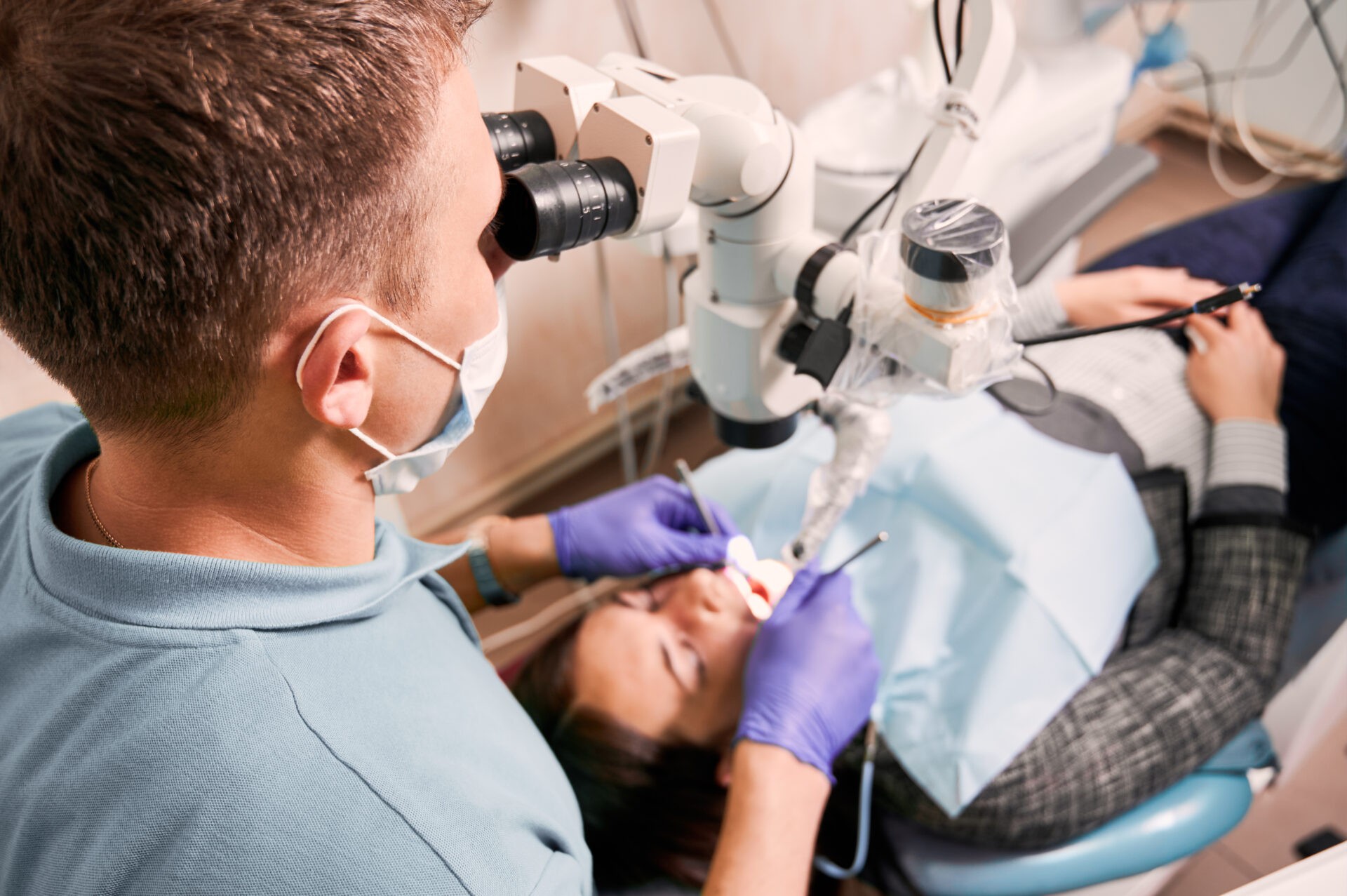“Only doctors are responsible.” How does Sedation happen and what should be paid attention to

Author: Olena Berezhna
Last time, we explored what anaesthesia in dentistry is, what types of anaesthesia are available and when it is indicated. Today, Olena Berezhna, the head physician of Professor’s
Dentistry, will tell us, how the sedation process should work in children and what parents should pay attention to. These recommendations are also relevant for adults.
Preparation
Anaesthesia is primarily about preparation and only then about manipulation. It all starts with diagnostics and consultation. At the initial stage, doctors take the necessary images, tell patients about the number of teeth to be treated and determine the estimated time of the procedure. This is the basis for a treatment plan, which is shared with the parents.
«We also look at the child’s level of cooperation, i.e. whether he or she makes contact, allows us to examine the oral cavity or take a picture» explains Olena Berezhna.
Parents receive a treatment plan, read it and sign it. If, for some reason, it was not possible to carry out a high-quality diagnosis during the preparation process, minor adjustments to the treatment process are possible. At the initial stage, they also explain how the treatment process will take place.
Then parents receive a memo on treatment under anaesthesia. After all, there is a part that dentists do, and there is a part that depends on the patient. The memo describes what tests should be taken so that the anaesthetist understands the child’s general condition, whether there are any general somatic diseases, whether the child is registered somewhere, etc. So there is a clear list of actions.
If the parents are satisfied with everything, including the cost, they choose the day of treatment. Closer to that day, the child undergoes tests, and the results are sent to the clinic for the anaesthetist to review. On the eve of the treatment, the anaesthetist calls the parents, asks them additional questions, reminds them of the recommendations for preparing for anaesthesia, such as not eating four hours before the treatment, etc.
“As for the tests, we warn parents that this is not just medical examination, these are not the certificates that can be bought, because it is about the health of the child. There are situations when the child was fed before anesthesia, then we do not take it for treatment, even if they were driving from another city. We repeat all the recommendations repeatedly. Parents should understand that there is bilateral responsibility,” says Mrs. Olena.
On the appointed day, parents come to the clinic and, together with an anesthesiologist, fill out a special questionnaire. Only then is the child taken for treatment.
Process
Parents enter the room with their child. The anaesthesiologist makes sure to introduce the child to all the items that will be used. For example, he gives them a mask for inhalation to hold. Then everything is familiar to the child and he or she takes it calmly. Then he or she falls asleep under the mask for about a minute and the parents leave the room.
Anaestesiologist puts a catheter to the patient, introduces all the necessary drugs, protects the respiratory tract (intubation). During anesthesia, the child’s various indicators are necessarily monitored according to the international protocol. It is a cardiogram, a pulse oximeter that measures the frequency of respiratory movements, oxygenation, etc., and a pressure measurement device and a temperature sensor. All parameters are displayed on the monitor.
After the treatment is completed, the child is transferred to the postoperative room, where her parents are already waiting for her. She gets enough and wakes up 15-20 minutes later. All this time, her condition is observed by an anesthesiologist, checks how to react to the question of whether to contact her parents. The doctor gives recommendations after how long you can eat and drink water, explains what feelings the child will have.
“This room is also equipped with a centralized oxygen supply and monitor. The patient is there for about an hour. This period of observation is mandatory — we do not let sleep children,“ says the doctor.
Pay attention
According to Mrs. Olena, it is wrong to do anesthesia on the day of the consultation. If a person, for example, has turned with acute pain, he can only be provided with emergency care and recommended to be treated in anesthesia.
“Either when they come from other cities, the child has a fever and we understand that it is from the inflammatory process in the teeth and there are indications for removal. Then we can wait two and a half hours of starvation so that the child does not eat, and remove this tooth under masked pain, that is, under inhalation. Because it’s a short-term action: the child breathed two or three minutes, we removed that tooth, and she wakes up in two or three minutes. For this type of treatment, we do not need tests, but still collect an an an anamnesion, ask if there are any general diseases,” says Olena Berezhna.
Also, the dentist must explain all the processes that will take place during treatment. Many people start to panic not because something goes wrong, but because they don’t understand how it will be. A detailed explanation will help to avoid anxiety and fear.
It is worth understanding that a dentist can not perform anesthesia. This is just the work of an anesthesiologist.
“Our anesthesiologists all work in general hospitals, they have an adult and child specialization. It can’t be an anesthesiologist who works only in dentistry. In hospitals, they are alert to unexpected cases. There is an anesthesiological brigade, entire departments, an algorithm for preparation and work worked out for automation,” explains Mrs. Olena.
The clinic should also have emergency
equipment to avoid any complications. To obtain a license for treatment under anaesthesia, the Ministry of Health created a list of equipment that should be in dentistry: these are defibrillators, and oxygen supply, and a list of medicines.
However, a qualified anaesthesiologist and compliance with all recommendations for preparation exclude the possibility of unpredictable situations.
In the following materials, together with experts and dentists, we will consider in more detail how the anaesthetist’s workplace and postoperative room should be equipped, what licences, certificates and equipment should be available in the clinic. We will also prepare detailed instructions for each patient on how to check whether you are dealing with a specialist who cares about your health or an unscrupulous escalator.
If you have any questions that you would like to ask directly to the doctor, but you can not get to the consultation now – you can leave them at the link. We will definitely ask a specialist and publish them in one of the following materials.
Comments
You can leave your comments on this article. Only for registered users. You need to either log in or register.

